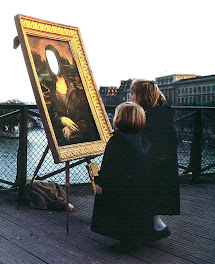Sherry Turkle es una de las personas más interesantes en el planeta. Antropóloga y profesora investigadora sobre ciencia y sociedad del MIT, primero se hizo famosa por analizar los espacios del naciente mundo de la web a mediados de los 1990s; su libro La Vida en la Pantalla fue un clásico de los estudios de la cibercultura. Ahora regresa, y creo que con un mejor libro que el anterior: Evocative Objects: Things We Think With (Objetos Evocadores: Cosas que nos ayudan a pensar). Robert Fulford escribe sobre el libro en el National Post de Canadá:
"... Years ago, the Technology Review described her as the Margaret Mead of computer culture, an anthropologist studying the new people of the online world. In 1984, she travelled to cyberspace, moved in with the natives and reported on their lives in a pioneering book, The Second Self: Computers and the Human Spirit. Since then, she's pursued the subject of humans interacting with computers.
Evocative Objects takes her away from the digital universe and into the world of the purely concrete. "Objects bring philosophy down to earth," Turkle has decided. As she explains, "We think with the objects we love; we love the objects we think with."
Turkle asked 34 scientists, artists and designers to write about objects they consider significant in their lives. She asked each one of them to follow the associations of the object: Where does it take you? What do you feel? What are you able to understand?
One chose to write about a 1964 Ford Falcon, another about a cello, another a yellow raincoat. Ballet slippers, a date book, a laptop and a rolling pin were picked by various contributors.
David Mitten focused on a 5,000-year-old limestone axe head that turned up a few generations ago on his grandfather's Ohio farm.
He keeps it on his fireplace mantel partly because learning in detail about how it must have been made told him about the patience and industry of the civilization that produced it.
He knows that someone hunted for a stone of the right size and then began turning it into an axe head by "seemingly endless pecking, pounding, chipping and grinding," probably over several years. That produced its sharp edge and the grooves for attaching it to a wooden handle. The handle was split at one end, softened in water, then slowly bent around the head's grooves. Wet rawhide was tied around the ends; when dried, it shrank, binding itself to the stone.
The maker, Mitten argues, freed this axe head from the stone in which it was encased -- as Michelangelo, millennia later, said he freed the human forms buried within his blocks of marble. Pondering the axe head sent Mitten toward his career as an archeologist of ancient cultures. "I owe it a great deal."
Dr. David Mann chose a physical object that's both commonplace and, in this context, surprising -- the World Book Encyclopedia. This particular object miraculously appeared in his otherwise bookless home. Somehow, perhaps from a persuasive door-to-door salesman, his military family acquired a boxful of books that compensated for the intellectual deprivation of his life.
His family was painfully silent: "Living was a private matter, best tended to in silence. Speech was less a gift than a liability. In the culture of our clan, true conversation, opening oneself to another's point of view, could never have taken hold." You couldn't discuss or argue. It would have been an offence to state a position and ask for someone else's views.
It would also have been a way to invite scorn. Mann remembers one maxim from his childhood: "Better to be silent and thought a fool, than to open your mouth and prove it." He now believes that the experience of his parents in Oklahoma's Dust Bowl days shrivelled their spirits, terrified them and rendered them mute. He remembers that a feeling of separateness from the human world dominated his childhood. But paging through the World Book Encyclopedia changed everything. " The World Book was my Rosetta Stone." By the time he was four, it had taught him to read. "Gentle masters, the books offered their secrets freely and never shamed me for inquiring." In those books, "the world opened to me and I myself opened to the world as I might otherwise never have done." Today, he practises medicine and teaches in the Harvard medical school. He's had many teachers, but the World Book was the first. It was also the one that taught him how to learn.
Nathan Greenslit, a young father, focuses on an ordinary vacuum cleaner as his evocative object. He writes a little drama about his daughter and her reactions to it. At age two, she was terrified by the sound and even the look of it. It was full of frightening possibilities: "She didn't trust that the vacuum couldn't animate itself without electricity from the wall."
He remembers how she absorbed it into her view of the world -- reluctantly accepted it, then grew to like it, then decorated it with butterfly stickers, then taught her younger sister not to fear it, then danced to its sound. By age four, she was so bored with it that she noticed it only when it interrupted her viewing of Blue's Clues.
Now her father looks at it, thinking about its story within the family, seeing in this mute object a vivid account of fear overcome. Today, he's the one who looks at it occasionally and finds himself startled by how much love and history and meaning has been acquired by this simple evocative object."
Muero por leer ese libro. Y para ustedes... ¿cuál es su objeto personal que mayor significado tiene?




No hay comentarios.:
Publicar un comentario